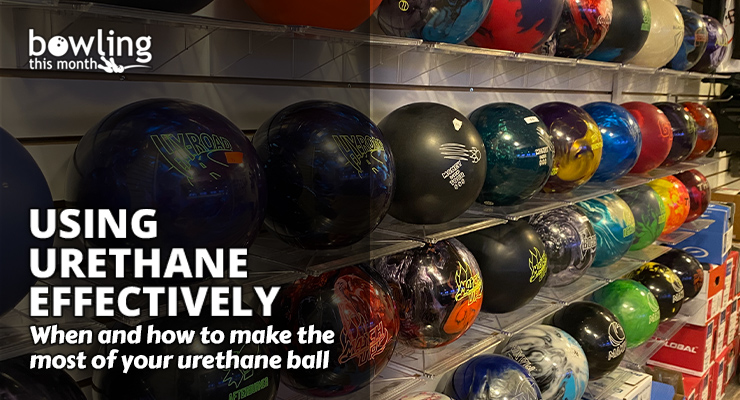Article Contents
- 1. Some historical perspective
- 2. The typical urethane reaction
- 3. Typical urethane matchups
- 4. Modern strategies for using urethane
- 4.1. Urethane pin carry
- 4.2. Environments for urethane bowling balls
- 4.3. What about house shots?
- 4.4. Manipulating urethane ball motion
- 5. Should I be using urethane?
- 5.1. Is the pattern relatively short?
- 5.2. Are the back ends clean/crisp?
- 5.3. Are you comfortable at this speed?
- 5.4. Is the risk/reward trending toward reactive balls?
- 6. Final thoughts
Note: This article is only available to Bowling This Month subscribers.
Should I be using a urethane ball? It’s a question that many bowlers find themselves asking, given how popular urethane has become at the highest levels of the sport. At one extreme, bowlers like PBA star Jesper Svensson have a bowling bag that is filled almost exclusively with urethane options, set up with different layouts and surfaces for use on just about any pattern. At the other end of the rev rate spectrum, bowlers might use urethane for spares or only on the driest of conditions. So when should you be using urethane? This article will help you figure that out.
One thing is certain: both the game of bowling and the technology in urethane bowling balls have evolved since their heyday in the 1980s. As such, concepts of when and how to use urethane have changed as well.
Some historical perspective
Before we dig into whether or not you should be throwing your urethane ball in your weekly league, it’s worth looking at a bit of history. At the time when urethane dominated the bowling ball market, bowling was also markedly different. In particular, the bowling release involved lifting through the shot and “hitting up” on the ball as much as possible to create hook. With the introduction of reactive resin bowling balls, the modern game evolved into a load/unload kind of release, with the hand opening through the release, as well as much higher ball speeds.
Urethane practically disappeared until the re-introduction of “short oil” on the international bowling scene. National team members went looking for old urethane balls to help them reduce hook and control the breakpoint on patterns with nearly 30 feet of dry back ends—a lot of Blue Hammers from the ’80s started popping up. This trickled down to national and regional events, prompting modern urethane to start being produced to fill the demand. A key ...
Already a premium member? Click here to log in.


